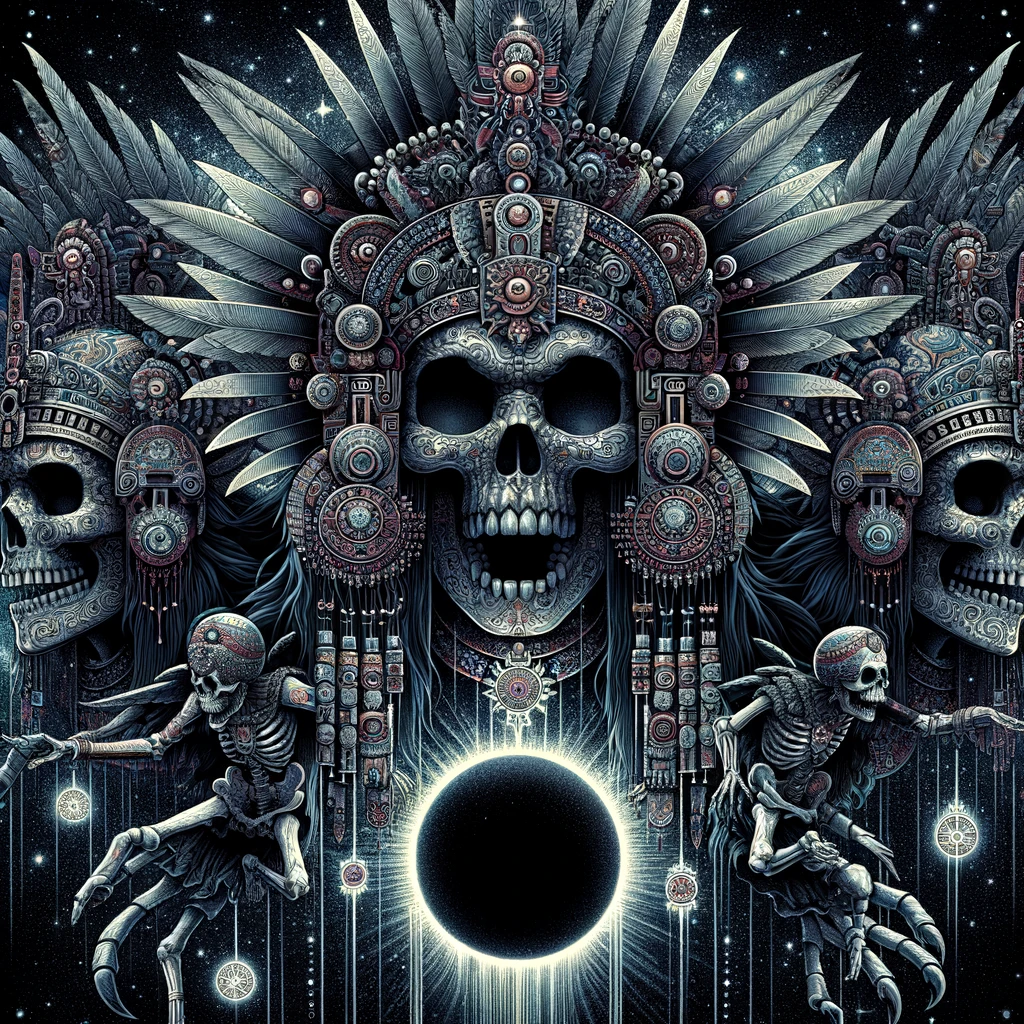In the rich tapestry of Aztec mythology, few beings are as fearsome and awe-inspiring as the Tzitzimime, celestial entities often depicted as skeletal female warriors clad in the darkness of the night sky. These mythical figures hold a significant place in the Aztec pantheon, embodying the fears and celestial phenomena that the Aztec people both revered and feared. This article delves into the lore, symbolism, and cultural significance of the Tzitzimime, shedding light on their role within Aztec cosmology and their lasting legacy in the study of pre-Columbian Mesoamerican cultures.
Origins and Descriptions
The Tzitzimime are often described as star demons or celestial beings associated with the stars, particularly those observed during solar eclipses or at the end of a 52-year cycle, which the Aztecs believed could herald the end of the world. These beings were thought to descend from the heavens to devour humans, their skeletal representations symbolizing death and the devouring aspect of the cosmos. The Tzitzimime were closely associated with the night, darkness, and the fear that came with the absence of the sun, embodying the chaotic and destructive forces of the universe.
Symbolism and Functions
Within Aztec mythology, the Tzitzimime played a dual role as both protectors and destroyers. While they were feared for their potential to bring about the end of the world, they were also respected as guardians of the heavens and the earth. Their imagery often served as a reminder of the constant presence of death and the need for balance between the forces of creation and destruction. The Tzitzimime were linked to several Aztec deities, including Coatlicue, the mother of gods, and Itzpapalotl, the obsidian butterfly, who was herself often depicted as a Tzitzimime.
Cultural Significance
The belief in the Tzitzimime reflected the Aztecs’ profound connection to the celestial realm and their understanding of the cyclical nature of time and existence. These beings were integral to Aztec ceremonies and rituals, especially those conducted at night or during solar eclipses. The Tzitzimime were invoked to ensure protection against the darkness and the potential chaos it could bring. Their presence in art, mythology, and religious practices underscores the Aztecs’ sophisticated cosmological beliefs and their acknowledgment of the delicate balance between life and death, creation and destruction.
Legacy
The legacy of the Tzitzimime extends beyond the realm of mythology into the study of astronomy, art, and anthropology. They offer insight into how the Aztecs viewed the cosmos and their place within it, highlighting the complexity of their religious and philosophical beliefs. Today, the Tzitzimime continue to captivate scholars and enthusiasts alike, serving as a testament to the rich cultural heritage of the Aztec civilization and its profound understanding of the natural and supernatural worlds.

In conclusion, the Tzitzimime are more than just mythical beings; they are symbols of the fears and hopes of the Aztec people, embodying the ever-present cycle of life and death that defines the human experience. As star demons, they bridge the gap between the earth and the heavens, reminding us of the power and mystery of the cosmos that continue to inspire awe and reverence to this day.
